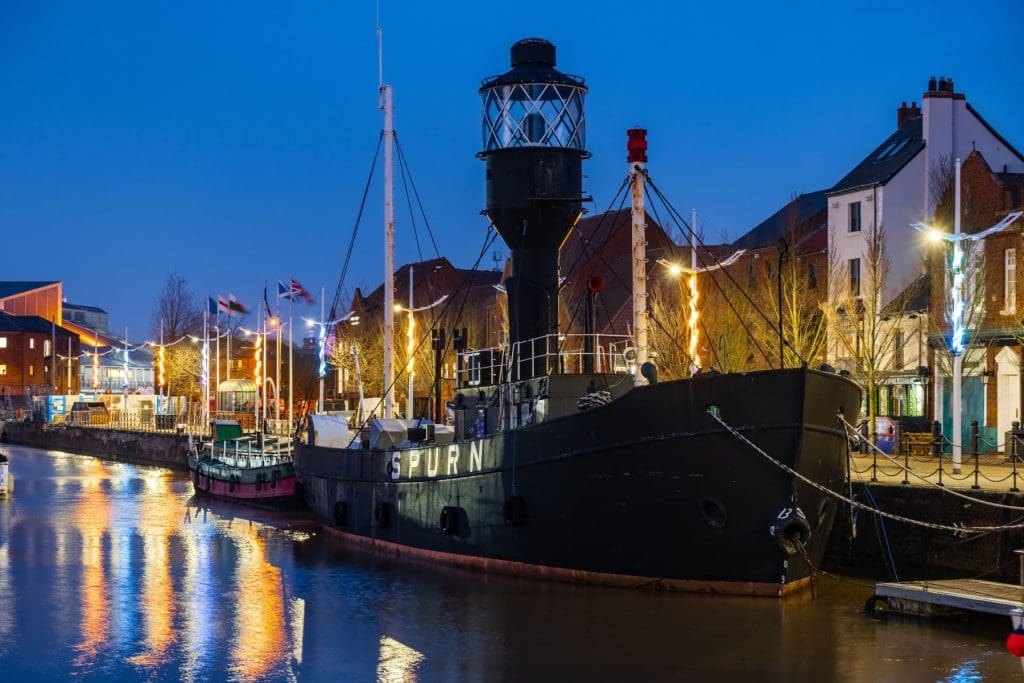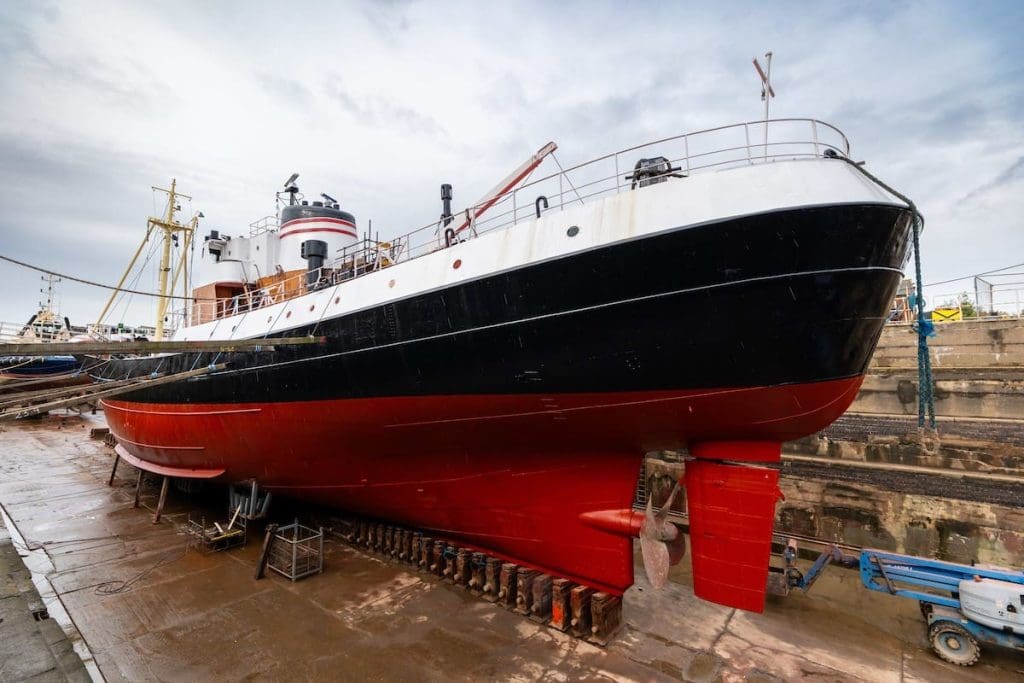Hull’s historic Spurn Lightship has returned to the city’s waterfront following a 14-month restoration in the latest stage of a multi-million-pound Hull Maritime regeneration project.
But while the vessel is now back in Hull Marina, visitors will have to wait until spring 2024 to climb aboard the Lightship when a new permanent berth is completed, creating a new-look attraction.
Built in 1927, the ship guided vessels as they navigated the Humber estuary, one of the world’s most treacherous waterways. A Hull landmark since opening as a museum in 1986, it moved for the first time in 35 years for refurbishment in 2018.
Now the restored ship has been towed from the local repair company’s base to a temporary berth opposite Humber Dock Street while work continues on its permanent home near Murdoch’s Connection, the striking new footbridge linking the Marina with the city centre.

From 2024, it will become a floating museum once again with the revamped experience giving more information about what it was like to work on the ship.
It will be the first of a host of new visitor attractions to open as part of Hull Maritime, a £30.3m, five-year project, funded by Hull City Council and The National Lottery Heritage Fund, to transform the city’s maritime treasures and celebrate 800 years of seafaring history.
Once the project is completed, which is expected to be early 2025, visitors will be able to chart a course through Hull, exploring its contributions to the UK and the world.
Over the next two years the lightship will be joined by more attractions, including a new visitor centre home for Hull trawler, the Arctic Corsair. The city’s last remaining sidewinder trawler will set sail for her final berth at a new £3.8m visitor attraction in the former North End Shipyard in the Old Town, due to open in 2024, showcasing the trawler’s dramatic story.
Showcasing and celebrating the trawler’s dramatic story – in a shipyard that was the original entrance to Queens Dock, the UK’s largest when it opened in the 18th century – the new attraction will include a state-of-the-art, energy-efficient ‘Passivhaus’ building.
Developed to achieve rigorous ‘Passivhaus’ standards – a German model, reducing a building’s energy consumption, requiring very little energy to heat – the new centre could see savings of up to 90 per cent compared to a typical new building. Providing high levels of comfort for staff and visitors, the system uses mainly passive heat sources like the sun, household appliances and human occupants to cover heating demand.

North End Shipyard is one of Hull’s hidden gems, an area at the very heart of the city’s maritime and trade history which spanned the world – and the place where both HMS Bounty and HMS Boreas, once commanded by Horatio Nelson, were built.
Few people also realise that it was from this port, in Defoe’s classic novel, that Robinson Crusoe set sail on his epic voyage only to get shipwrecked on a remote island.
Now it will become the new, permanent dry-berth for the Arctic Corsair, preserving her future for the next 100 years, as part of the ambitious ‘Hull: Yorkshire’s Maritime City’ project.
Making Hull’s 800 years of seafaring history even more of a key part of the city’s tourism offer, the project will ultimately create a new route to guide visitors through the city to the River Hull, highlighting its outstanding maritime heritage.
The Arctic Corsair – which has been dubbed Hull’s ‘Cutty Sark’ – is a nationally significant vessel representing the end of a once major industry. Built in Beverley in 1960, her career has included a world-record catch and conflict in the Cod Wars during the 1970s.
Today she is the nation’s only distant-water sidewinder trawler consistently accessible as a floating attraction and open to the public. In 2019, she sailed along the River Hull for the first time in 20 years, into temporary storage.
Once completed, the new two-storey visitor centre will tell the story of the trawler and the heyday of Hull’s trawling industry as well as enable visitors to walk right under the ship’s hull and tour the vessel to appreciate her true size and scale.
The energy-efficient design of the new building, aiming for net zero carbon in operation, supports Hull City Council’s 2030 Carbon Neutral Strategy by generating energy through renewable technologies to offset the carbon associated with the energy consumed within the building.
Among other new-look attractions will be Hull’s popular Maritime Museum, which closed its doors in 2019 for a £12m refurbishment, and due to re-open in early 2025.
For more information visit maritimehull.co.uk. Photo credits: Maritime City.



